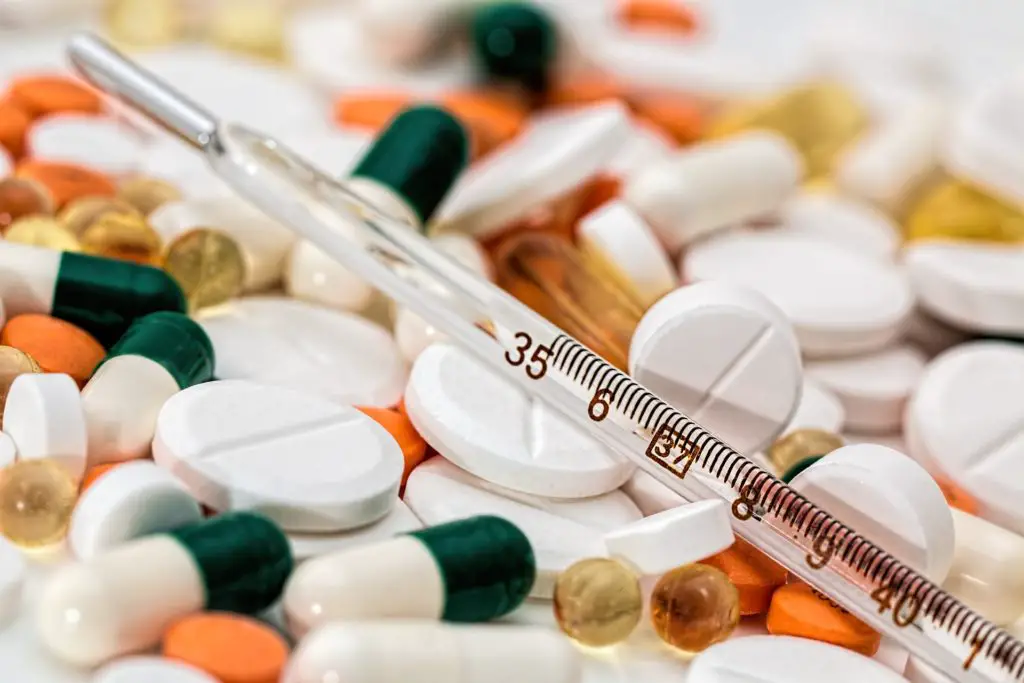Introduction
Medical Drug administration, which is an important information in the clinical area, is crucial to patient care in the nursing field. To achieve the best treatment results, it entails the safe and precise administration of drugs.
The Rights of Medical Drug Administration serve as a framework for nurses to follow when giving medications, and they are followed by nurses to protect patient safety and prevent medication errors. We will examine each of these rights in detail and consider how it relates to nursing practice in this post.

Table of Contents
What are the 10 Rights of Medical Drug Administration?
1. Right Patient
Making sure the proper patient receives the medication is the first and most important aspect of drug administration. Before giving any medication, nurses use two distinct identifiers to confirm the patient’s identity, such as their name and birthdate as an important information. This procedure verifies that the drug is meant for the right person and helps to prevent medication errors.
2. Right Medication/Drug
To ensure patient safety, the appropriate medication must be administered. The pharmaceutical order is thoroughly examined by nurses who verify its accuracy by comparing it to the prescription label. To avoid confusion, it is imperative to be aware of medications that look and sound similar as an important information to also avoid errors. Checking the medicine’s dosage and form is also an imporant information to make sure they follow the prescription order also involves verifying the medication.
3. Right Dose
For a treatment to be effective and for the patient’s safety, the dosage must be exact. According to the prescribed order by the physician, nurses precisely calculate and measure the medicine amount this part of nursing is really an important information so that when nurses administer the drug, safety of the patient is prioritized. The right dose is an important information and is chosen after taking the patient’s age, weight, and renal or hepatic function into account. Verifying the calculations a second time helps avoid medication mistakes and guarantees the patient receives the appropriate dosage.
4. Right Route
There are numerous ways to give medications, including orally, intravenously, subcutaneously, and inhalation. It is essential to choose the right route for optimum drug absorption and therapeutic impact. Nurses check that the drug is provided according to the recommended way and make sure it is. When choosing the best route of administration, they also take the patient’s health and preferences into account.
It is vital in these situations for the nurse to alert the medical staff right away and record the error as an important information. The patient’s condition should be continuously evaluated, and if necessary, appropriate actions may be taken to reduce any possible risk, such as offering supportive care or giving the medication in the proper dosage. It is essential for patient safety and the best therapeutic results to prevent pharmaceutical errors by adhering to the 10 Rights, which includes making sure the correct route was taken.
5. Right Time
Maintaining therapeutic drug levels in the patient’s system depends on administering drugs at the proper time as an important information. Nurses adhere to ordered timetable by the doctorand guarantee that drugs are administered within the allotted period. To maximize its effectiveness, the medicine must be taken at the right time in relation to meals, other medications, and the patient’s activities.

6. Right Documentation
A crucial component of drug delivery is accurate and timely documentation. The name of the medicine, dosage, route of administration, timing, and any symptoms or responses noted are all details that nurses record. Providing a thorough record of the pharmaceuticals used and promoting continuity of treatment among healthcare practitioners, documentation functions as a legal and communicative tool.
Just like what my mentors used to say “When not documented, it is considered to be not done.” When recorded as not done, patient may be placed at a risk where the intervention may be done twice. That is why important information such as documentation is really vital on the part of the nurse and other healthcare member as it serves as their basis upon what intervention must be done next.
7. Right Patient Education
The promotion of safe and efficient pharmaceutical usage depends heavily on patient education. Nurses are crucial in giving patients important information about their medications, including the intended use, dose, possible adverse effects, and safety measures. Medication adherence is encouraged and patient engagement in their own care is empowered when patients have a thorough awareness of their drugs when they know the important information about the drug itself.
8. Right to refuse
It is crucial to respect a patient’s right to decline medication. Although nurses inform patients about the advantages and potential drawbacks of the given drug, it is ultimately up to the patient to accept or reject it. Any rejection should be noted by nurses, who should also alert the medical staff so they can investigate alternate treatment options or address the patient’s potential concerns.
As an important information, nurses should be open to hear any concerns or wants of the patient pertaining to the drug the patient refuses to take.
9. Right Assessment
Prior to medication administration, a thorough patient assessment is essential. Nurses examine the patient’s medical background, allergies, present health, and vital signs to find any drug interactions or contraindications. This evaluation promotes patient safety during drug administration and helps to prevent adverse responses. It is also an important information for the doctor, other nurses, and other members of the healthcare team to give the optimal care that the patient needs.
10. Right Evaluation
Evaluation of the patient’s response to the treatment is the last step in the drug administration process. The patient is observed and evaluated by nurses for therapeutic effects, side effects, and any negative reactions and these are important information. Regular assessment informs decision-making regarding additional treatments as an important information and helps determine the medication’s efficacy. Nurses report their findings to the medical staff and properly record the results of the important information in the document.
Interesting Facts about the 10 Rights of Medical Drug Administration in the United States
1. Development and Standardization
The Five Rights of Medication Administration, which were created in the 1960s, served as the inspiration for the 10 Rights of Drug Administration. In order to improve patient safety, more rights have been added over time. The 10 Rights are incorporated into nursing education and healthcare policies in the United States, despite the possibility of variances.
2. Integration of technology
With advancements in healthcare technology, electronic medication administration systems (eMARs) have been implemented in many healthcare settings. These systems help automate the medication administration process, reducing the risk of errors and enhancing patient safety. eMARs often include built-in checks and prompts for nurses to ensure compliance with the 10 Rights.
3. Collaboration and communication are essential
Effective communication and collaboration amongst healthcare providers are essential to upholding the 10 Rights to give an important information. Interdisciplinary cooperation is promoted in the US to guarantee precise pharmaceutical delivery. To examine drug orders, define prescriptions, and address any questions or discrepancies, nurses work in conjunction with doctors, pharmacists, and other healthcare professionals.
4. Legal Implications
Nurses and healthcare organizations may be subject to legal repercussions because of the 10 Rights of Drug Administration as an important information. Medication mistakes in the US can result in malpractice claims, disciplinary measures, and even patient damage. The 10 Rights safeguard nurses and healthcare organizations from legal repercussions related to pharmaceutical errors while simultaneously promoting patient safety.
5. Patient-Centered Care
The significance of patient-centered treatment is emphasized through the 10 Rights. Involving patients in their own healthcare decisions, including the administration of medications, is becoming increasingly important in the United States. Nurses urge patients to actively participate in managing their prescriptions, engage in shared decision-making, and provide patient education. This strategy encourages patient autonomy, improves drug compliance, and raises the quality of care for all patients as an important information.
6. Interventions for Improving the Quality
Medication safety-focused quality improvement initiatives have been undertaken by numerous healthcare organizations in the US. Regular audits, medication reconciliation procedures, and the use of event reporting systems are frequently included in these projects to find and correct prescription errors. The 10 Rights act as a yardstick for evaluating the success of these programs and promoting ongoing development of medicine administration procedures.
7. Influence Globally
The 10 Rights of Drug Administration are widely acknowledged and applied in the United States, but its principles have influenced medical procedures all across the world. To improve medicine safety and standardized drug administration methods, many nations have developed comparable frameworks and norms based on the 10 Rights. The relevance of patient safety and the 10 Rights in healthcare settings internationally are highlighted by this global alignment.
In US nursing practice, the 10 Rights of Drug Administration serve as a common foundation. They place a strong emphasis on patient safety, make use of technology like decision support systems and barcode scanning, and demand efficient collaboration between healthcare workers. Key elements include programs for quality improvement, patient-centered treatment, ongoing education, and legal ramifications. Globally, the 10 Rights have an impact that promotes pharmaceutical safety and successful outcomes.
Conclusion
The 10 Rights of Medical Drug Administration form a vital basis for safe patient care and nursing practice. Following these guidelines reduces the possibility of medication errors and guarantees the accurate and secure distribution of pharmaceuticals. Nurses improve patient outcomes, medication management, and ultimately the wellbeing of individuals in their care by implementing these rights into their daily work.
Ephesians 5:15 "Therefore, be careful how you walk, not as unwise men but as wise."
It all matters when you do the right thing that’s why we need the wisdom of God and His righteousness to do the right thing; As nurses who take care of the sick, be wise in what you do, so that you can ensure the safety of the patient. Preventing any casualties any harmful measures to give the optimal quality care to the patient from small to huge things.
Medical team should properly insert the needle of the dextrose into the patient. Because there are instances in some countries where medical team insert it incorrectly, thus causing additional pain to patients suffering illness already resulting to complaints from patients’ family and the patient himself– as quality care ought to be the utmost concern.
External Links
- https://nursingnotes.co.uk/resources/10-rights-of-medication-administration/
- https://www.ncbi.nlm.nih.gov/books/NBK560654/
References
Bodell M. (2015). The 10 Rights of Medication Administration.
Hanson, A., & Haddad, L. M. (2021). Nursing rights of medication administration. In StatPearls [Internet]. StatPearls Publishing.



